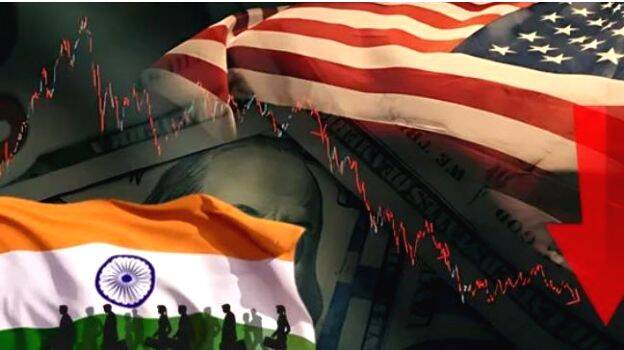

India appears to enjoy a comfortable trade surplus with the United States. In 2024‑25, our exports to the US touched $131.84 billion while imports stood at around $90.66 billion, leaving us with a goods surplus of $41.18 billion. Policymakers often cite this as proof of India’s strong trade position. Yet this is only half the story. When we look beyond merchandise trade and count the money flowing quietly out of India, the picture flips.
According to trade experts, the US earns between $80 and $85 billion annually from India through education exports, financial services, intellectual property rights, royalties, digital operations and arms sales. Once these “invisible” outflows are added, Washington enjoys a net surplus of $35 to $40 billion in its dealings with India. In other words, the real balance tilts heavily in America’s favour.
These flows are neither small nor incidental. Consider intellectual property. In 2024, India’s global outflow for royalties and licensing fees was $16.26 billion, of which an estimated $2.3 to $3.2 billion went to US corporations. Apple alone reportedly received $532 million in licence fees from India last year. These payments, often exceeding 20 per cent of profits in some sectors, are a steady pipeline of Indian enterprise value to US boardrooms.
The digital economy tells a similar story. Google India reported ₹31,221 crore ($3.7 billion) in gross advertising revenue in FY24 and remitted ₹28,477 crore to its Asia Pacific headquarters, effectively transferring most of that value outside the country. Meta, with its 798 million Indian users across Instagram, WhatsApp and Facebook, generated ₹22,730 crore in advertising revenue, feeding into its global earnings of $46.6 billion in a single quarter. Despite India being one of their largest markets, the bulk of these revenues leaves our shores.
Education and defence further deepen this imbalance. Nearly 269,000 Indian students are enrolled in US universities, spending an estimated $8 billion annually on tuition and living costs. In the defence sector, the US has emerged as one of India’s biggest arms suppliers, capturing a large share of our capital imports. These are strategic relationships, but they also add significantly to America’s invisible surplus. Add to this tourism - with more than 1.4 million Indians visiting the US annually and spending $5 to $6 billion - and the scale of outflows becomes hard to ignore.
At the same time, US trade policy has turned sharply protectionist. The average effective tariff has climbed to 15.5 per cent - the highest since 1936 - with steep hikes on steel and aluminium, which now face a 50 per cent duty. Washington has also threatened new tariffs of 25 per cent on 3,000 Indian products, a move that could wipe out $6 billion in our exports, hitting labour‑intensive sectors like textiles, gems, jewellery and pharmaceuticals.
Yet instead of pushing back firmly, India has been quietly conceding ground. We have reduced import duties on US products such as bourbon whiskey, motorcycles and mobile components, scrapped the 6 per cent digital tax on American tech giants and are preparing to revise our nuclear liability law to facilitate US reactor sales. All this while Washington justifies its tariff hikes on “national security” grounds and refuses to discuss them at the WTO.
The imbalance is no longer just economic. It has become a question of sovereignty. Every dollar flowing out of India through royalties, digital payments, tuition fees or defence contracts enhances American leverage and weakens our bargaining power. If India aspires to strategic autonomy, it must ensure that the value created within its borders is retained and reinvested here.
The way forward is not to retreat into protectionism but to negotiate from a position of strength. Intellectual property payments should be tied to local research and development commitments. Global digital platforms must be encouraged to reinvest a larger share of their revenues in India. Our universities need urgent investment so that fewer Indian students are compelled to spend billions abroad. Tourism infrastructure should be strengthened to redirect high‑spending travellers towards domestic destinations. And trade negotiations must be used to demand real reciprocity - if Washington wants greater access to Indian markets, it must also lower its barriers and share technology.
Make in India has already transformed electronics, with iPhone exports crossing $6 billion per quarter. A similar push in education, services and digital platforms could cut these invisible outflows by 15 to 20 per cent within the next three years.
The United States has enjoyed a cumulative $100‑billion surplus from India over the last five years when invisibles are counted. These flows fund American innovation, universities and digital monopolies while steadily draining Indian capital. It is time we saw this imbalance for what it is: a silent transfer of wealth that undermines our economic sovereignty. India has the market size, the talent and the leverage to reset this relationship. But only if we act with clarity and purpose - and act now.